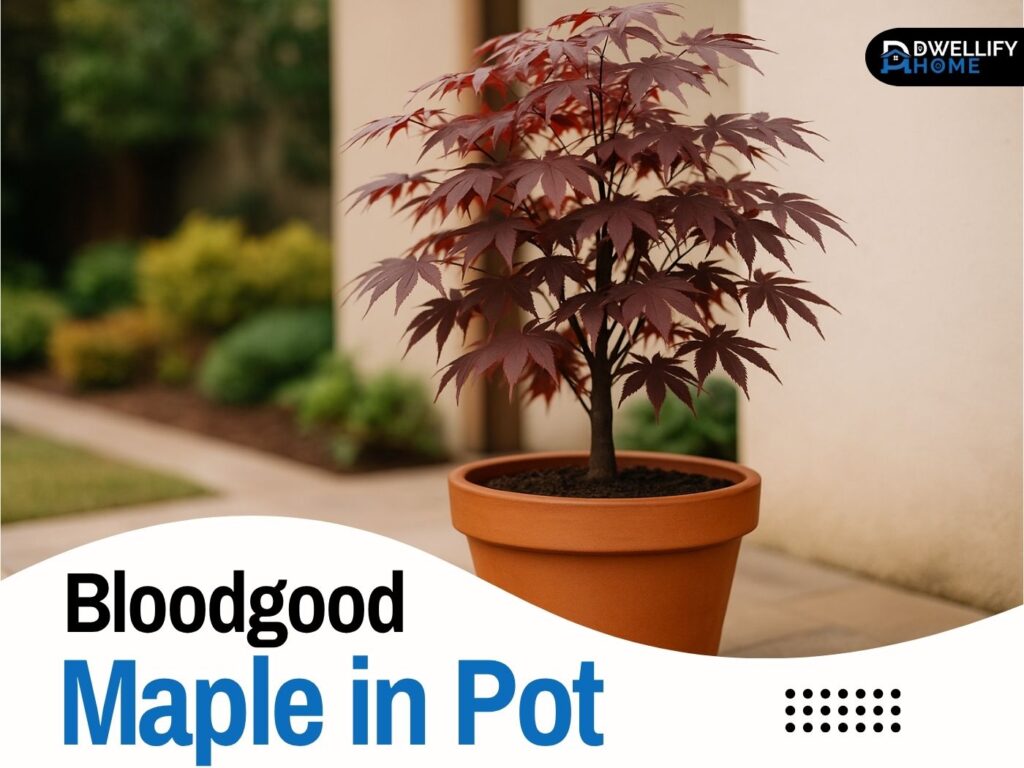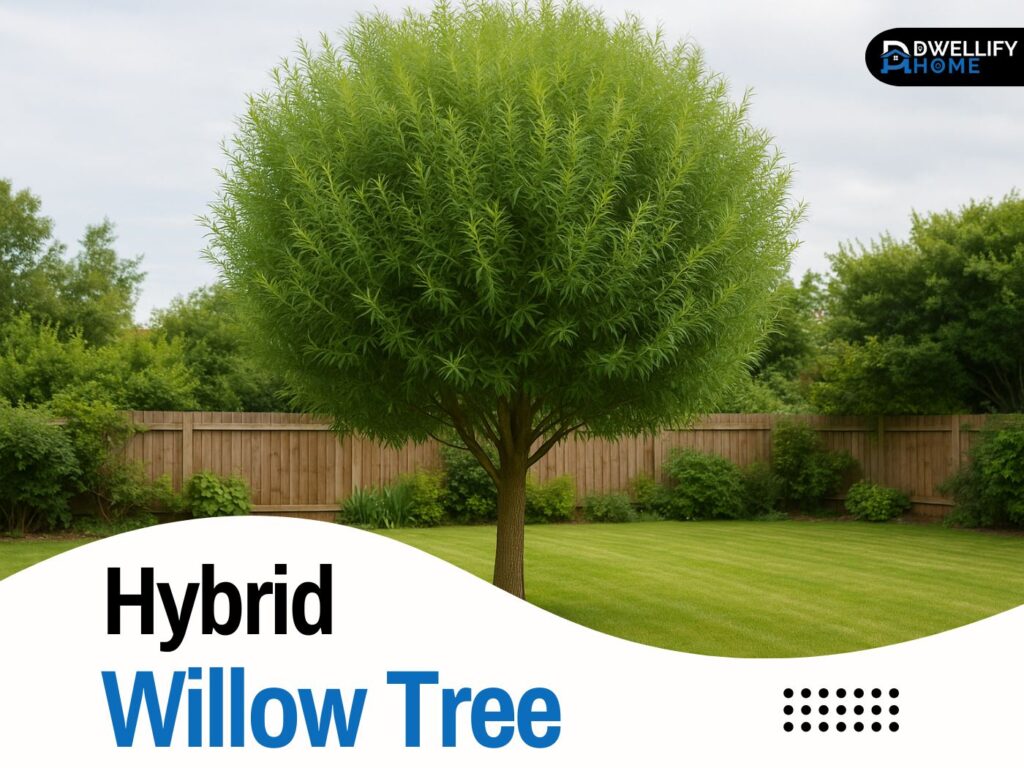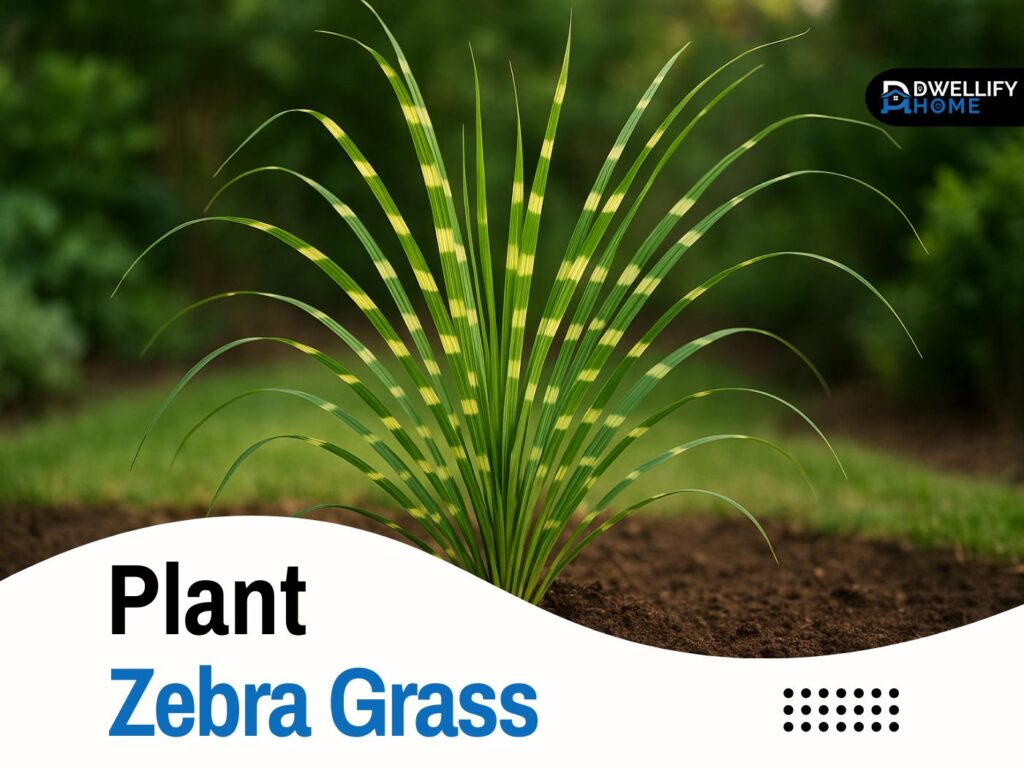When I first planted my Bloodgood Maple in a pot, I didn’t expect it to steal the spotlight on my patio so quickly. Its deep red leaves shimmered like little flames in the morning sun — honestly, it felt like nature’s art in a container.
If you’re short on space, or just love the idea of having a stunning Japanese maple right by your doorway, here’s the thing — growing a Bloodgood Maple in a pot isn’t just possible, it’s genuinely rewarding. You just need to understand how to keep it happy: the right soil, pot, water, and a little patience. Let’s walk through everything step by step so your tree thrives all year long.
Snippet-Ready Definition:
A Bloodgood Maple in pot is a Japanese maple variety grown in containers for its stunning red leaves and compact size. It’s perfect for patios, balconies, and small gardens with proper soil, light, and care.
Mission Statement:
Our mission is to help every gardener — from beginner to expert — enjoy the timeless beauty of Japanese maples. Through easy, trustworthy advice, we aim to make growing a Bloodgood Maple in a pot simple, rewarding, and sustainable. We believe every patio and balcony deserves a touch of nature’s red elegance.
Understanding the Bloodgood Japanese Maple
Before we get our hands dirty, let’s talk about what makes the Bloodgood Japanese Maple so special. Originating from Japan, this beautiful tree — known scientifically as Acer palmatum ‘Bloodgood’ — is admired for its deep burgundy-red leaves that glow in sunlight.
What’s even better is that it changes color with the seasons — bright crimson in fall, subtle maroon in summer. Its compact size and elegant branching make it perfect for small gardens and patios.
Compared to other Japanese maple varieties, Bloodgood grows moderately — around 6–12 inches a year — making it an ideal candidate for pot culture. You get that dramatic look without worrying about it outgrowing your space.
Can a Bloodgood Maple Really Grow in a Pot?
Absolutely, yes! A Bloodgood Maple in a pot can do beautifully for many years if you give it the right care. The trick is balancing growth space and root health.
Here’s the thing: in the ground, a Bloodgood can reach 15–20 feet tall. But in a pot, it stays much smaller — about 6 to 8 feet at maturity — which actually makes it perfect for patios and balconies.
Now, don’t get me wrong — potted maples need a little extra attention:
- They dry out faster than ground-planted ones.
- Their roots can overheat in summer or freeze in winter.
- And yes, they’ll need occasional repotting.
But once you learn how to manage those few things, it’s one of the easiest ornamental trees you’ll ever grow. I’ve had mine for five years now, and every season it still feels brand new.
Choosing the Right Pot or Container
If you ask me, choosing the right pot is half the battle won. Your Bloodgood Japanese maple in a pot needs room to breathe — but not so much that roots drown in extra soil.
Here’s what to keep in mind:
- Size: Pick a pot that’s at least twice as wide as the tree’s root ball. A 16–20 inch wide container works great for young trees.
- Material: Terracotta and ceramic pots look gorgeous but can dry out faster. Resin or fiberglass pots are lightweight and retain moisture better.
- Drainage: This is non-negotiable. Make sure your pot has several drainage holes. Root rot is the number one killer of potted maples.
The best part is that you can play around with aesthetics — Japanese-inspired containers, stone pots, or even rustic wooden planters. Your tree becomes both a living sculpture and a design piece.
The Perfect Soil Mix for Potted Bloodgood Maples
Soil is like your tree’s comfort zone. For Bloodgood maple in pot, good drainage is everything.
Here’s my go-to mix (and it’s worked wonders for years):
- 50% high-quality potting mix
- 25% pine bark or composted bark
- 25% perlite or coarse sand for drainage
Keep the soil slightly acidic (pH 5.5–6.5). That’s where maples really shine. Avoid garden soil — it’s too heavy and suffocates roots. You want something airy, fluffy, and rich.
Pro tip: add a thin mulch layer on top. It keeps the soil moist, cools the roots, and gives a clean finish to your pot.
How to Plant a Bloodgood Maple in a Pot
Alright, time to get your hands dirty — literally.
Follow this simple step-by-step method:
- Choose your container and prep it with a drainage layer (gravel or bark chips).
- Fill halfway with your potting mix.
- Gently remove the maple from its nursery pot and loosen the roots.
- Set it in the new pot so the root ball sits level with the soil surface.
- Fill in around it with your soil mix, pressing lightly (don’t compact).
- Water thoroughly until it drains out the bottom.
- Add mulch and place it in bright, filtered light.
I like to do this in early spring or late fall — when temperatures are mild and the tree isn’t under stress. That way, it adjusts quickly and starts off strong.
Watering and Moisture Care
Here’s where most people slip up. A potted Bloodgood maple loves moisture — but hates soggy feet.
I water mine when the top inch of soil feels dry. In summer, that’s almost every other day; in cooler months, once a week is plenty.
And remember:
- Always water deeply so moisture reaches the lower roots.
- Avoid shallow “sprinkles.”
- If water runs straight through, your soil may be too loose — add organic matter next time.
Mulching helps a lot here. A 2-inch layer of bark chips keeps the soil cooler and reduces evaporation.
And here’s a bonus trick: raise the pot slightly on bricks or pot feet so water drains freely. It prevents root rot and improves air circulation.
Feeding and Fertilizing for Healthy Growth
Think of feeding as giving your maple a little energy boost. Bloodgood maples don’t need much fertilizer, but a gentle feeding makes a huge difference.
Use a slow-release balanced fertilizer (like 10-10-10) in spring when new leaves appear. I like organic options — they’re gentler and safer for roots.
Mid-summer, give another light feed to maintain that deep red color. Avoid fertilizing in late fall or winter — the tree needs rest.
You can also add compost tea once a month in growing season for extra nutrients. Trust me, it keeps the leaves looking vibrant and full of life.
Light, Shade, and Placement
Light is everything for color and leaf health. Bloodgood Japanese maples love morning sun and afternoon shade.
Too much direct sunlight — especially in hot climates — can scorch those delicate leaves. But too little, and the red color fades.
The sweet spot?
- Place your pot where it gets 4–6 hours of sun daily.
- Rotate the pot every few weeks for even light exposure.
- If you live somewhere hot (like Texas or Arizona), give it afternoon shade.
On top of that, avoid windy corners. The leaves are paper-thin and tear easily.
Pruning and Size Control
Here’s the fun part — shaping your tree!
Potted maples naturally grow slower, but you’ll still want to prune lightly each year.
I usually prune in late winter or early spring, just before new growth starts. Remove:
- Dead or crossing branches
- Twigs growing toward the trunk
- Any branch that breaks the canopy’s symmetry
Avoid heavy pruning. A little trim goes a long way. And if you’re adventurous, you can try light bonsai-style pruning to give your tree a sculpted look.
Every few years, trim the roots too when repotting. It helps control size and encourages new feeder roots.
Repotting and Root Care
A Bloodgood maple in pot can live happily for years — but its roots will eventually fill the space.
Plan to repot every 2–3 years. Signs it’s time:
- Water drains too quickly
- Roots peek out from drainage holes
- Growth slows noticeably
When repotting:
- Remove one-third of the old soil.
- Trim the roots by 20–30%.
- Move it to a slightly bigger pot (just a few inches wider).
- Refresh the soil mix.
This keeps your tree healthy, balanced, and thriving long-term.
Seasonal Care and Winter Protection
Cold weather is where most potted maples struggle — not from the air, but from freezing roots.
In fall, stop fertilizing and reduce watering so the tree starts to rest. When winter hits:
- Move your pot to a sheltered area, like an unheated garage, porch, or shed.
- Wrap the pot with burlap or bubble wrap to insulate roots.
- Mulch the top thickly to lock in warmth.
If you live in a mild climate, your maple can stay outside — just protect it from harsh wind and frost.
Guess what? The tree looks bare in winter, but it’s quietly preparing for another burst of color come spring.
Growth Rate, Size, and What to Expect
One of the best things about growing a Bloodgood Japanese maple in a pot is how manageable it stays.
You can expect around 6–12 inches of growth per year in a container. At maturity, it reaches 6–8 feet tall, making it ideal for small gardens, patios, or even balconies.
It’s slow, steady, and incredibly graceful — just like nature intended.
The key is patience. These trees aren’t meant to rush. Each season brings a new surprise — more leaves, richer color, stronger roots.
Common Problems and Simple Fixes
Every gardener hits a few bumps, so let’s troubleshoot common issues:
Leaf Scorch: Usually from too much sun or dry soil. Move it to partial shade and increase watering.
Root Rot: Caused by poor drainage. Repot with fresh, airy soil and ensure proper holes.
Pests (Aphids, Scale, Spider Mites): Wipe leaves with neem oil or a mild insecticidal soap.
Yellowing Leaves: Often from overwatering or poor fertilizer. Let the soil dry slightly and feed lightly next season.
Once you get used to its needs, your maple will become low-maintenance. Mine practically tells me when it’s thirsty — the leaves droop just a bit, then perk right up after a drink.
Buying Tips and Where to Find Them
If you’re just starting, buy a young Bloodgood Japanese maple — around 2–3 feet tall. It adapts faster to pots than mature trees.
When shopping, look for:
- Healthy leaves (no brown edges)
- Firm trunk and roots (no rot smell)
- Visible graft union (clean and smooth)
You’ll find them easily at local nurseries or online stores listed as “bloodgood maple in pot for sale” or “japanese maple in pot for sale.”
I personally prefer buying in spring — that way, the tree gets a full growing season to settle in.
Design & Aesthetic Ideas
Here’s the fun, creative side. Your potted Bloodgood maple isn’t just a plant — it’s decor!
Try these ideas:
- Place it at your front entrance for a bold, welcoming touch.
- Use dark pots to make the red leaves pop.
- Combine it with moss, small ferns, or pebbles for a Japanese garden vibe.
- Add lighting beneath for an incredible nighttime glow.
The best part? It looks different every season — bright red in spring, darker burgundy in summer, and fiery crimson in fall.
Expert Tips You’ll Thank Yourself For Later
Here are a few things I wish I knew earlier:
- Use rainwater if you can — it’s softer and prevents salt buildup.
- Turn your pot every month for even growth.
- Avoid over-potting; go up in size gradually.
- Keep a watering diary (seriously, it helps track patterns).
- In windy areas, tie the pot to a railing to prevent tipping.
It’s small habits like these that turn good gardeners into great ones.
Comparison Table: Potted vs Ground-Grown Bloodgood Maple
| Feature | Bloodgood Maple in Pot | Bloodgood Maple in Ground |
| Height | 6–8 ft (manageable) | Up to 15–20 ft |
| Growth Rate | Moderate (6–12 in/yr) | Faster |
| Root Space | Limited, requires pruning | Expands freely |
| Mobility | Easy to move or reposition | Permanent |
| Maintenance | Needs watering, repotting | Low maintenance |
| Best For | Patios, small spaces | Landscapes, gardens |
Step-by-Step: How to Plant a Bloodgood Maple in a Pot
- Choose a large pot — at least twice the root ball size with good drainage holes.
- Mix soil — potting mix, pine bark, and perlite (50/25/25 ratio).
- Position the tree — root ball level with the pot’s top edge.
- Fill & firm — gently press soil around roots without compacting.
- Water deeply — until excess drains out from the bottom.
- Mulch & place — add bark mulch and set in bright, filtered sunlight.
FAQs (Real Search-Based Queries)
1. Can you plant a Bloodgood Japanese Maple in a pot?
Yes! With a large, well-draining container and quality soil, Bloodgood maples thrive in pots for years. Just protect roots from extreme heat and cold.
2. How long can a Japanese Maple stay in a pot?
It can stay in a pot indefinitely if you repot every 2–3 years and trim roots as needed. Proper drainage and balanced feeding keep it healthy long-term.
3. Can you keep a Bloodgood Japanese Maple small?
Absolutely. Regular root and branch pruning keeps your maple compact and shapely. Many gardeners enjoy maintaining them at 5–6 feet tall.
4. How big of a pot do I need for a Japanese Maple?
Start with an 18–24 inch wide pot for young trees. As it grows, move to a slightly larger pot every few years to allow steady root expansion.
5. What is the best Japanese Maple to grow in a pot?
The Bloodgood Japanese Maple is one of the best! Others like Red Dragon and Shaina also perform beautifully in containers due to their compact growth.
6. Can a Bloodgood Japanese Maple take full sun?
It can tolerate morning sun, but protect it from harsh afternoon light. Too much direct sun can cause leaf scorch, especially in hot regions.
7. Can a Bloodgood Maple live in a pot forever?
Yes, with root pruning and repotting every few years, it can thrive in a pot for decades.
8. What’s the best pot size for beginners?
Start with an 18–20 inch pot — big enough for root growth, small enough to manage easily.
9. How do I protect my potted maple in winter?
Move it somewhere sheltered and insulate the pot. Don’t bring it into a heated room — it needs cold dormancy.
10. How tall will it get in a pot?
Usually 6–8 feet, depending on pruning and care.
11. Can I grow dwarf Japanese maple trees alongside Bloodgood?
Yes! They make beautiful contrast displays when grouped in containers.
Conclusion
Growing a Bloodgood maple in pot is one of those little joys that never get old. Every season brings new color, new texture, and new life to your space.
It’s not hard — it just needs attention, balance, and love. Once you understand its rhythm, it’ll reward you with beauty that feels almost magical.
Trust me, once you see those deep red leaves glowing in the sunlight, you’ll know it was worth every bit of effort.
Disclaimer
This article is for informational and educational purposes only. While we share real gardening experience and expert-backed advice, individual results may vary based on climate, soil, and care routine. Always consult local garden centers or certified arborists for location-specific guidance.

I’m Bilal, the founder of Dwellify Home. With 6 years of practical experience in home remodeling, interior design, and décor consulting, I help people transform their spaces with simple, effective, and affordable ideas. I specialize in offering real-world tips, step-by-step guides, and product recommendations that make home improvement easier and more enjoyable. My mission is to empower homeowners and renters to create functional, beautiful spaces—one thoughtful update at a time.




